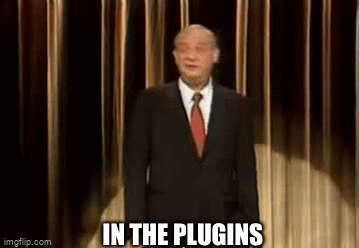When you fire it up and plug in, what are the things that excite you as you are about to play?
I actually did just fire mine up, and I am, theoretically, about to play, so I should try to be quick. (I failed LOL.)
A little background: I was an early adopter of Kemper way back when. I thought it sounded great, but the feature set was all wrong for me. Even after I'd put an aftermarket power amp in the back, I just couldn't sort out a live rig that made any sense. Toaster + cabinet + footcontroller was kind of a handful for a quick night out, and it was hard to put together a footcontroller that met my needs. (Eventually Kemper released their own, but it, too, lacked features I needed, and was expensive.) This, the fixed signal path, and the limited I/O - largely owing to the absence of USB audio/MIDI - made too many important and/or fun things impossible. And the UI never resonated for me. I liked the "pretty much like an amp head" ethos, but it always felt like every button was mysteriously on the opposite side of where my hands were, my hands were always in the way of the screen, etc.
When Helix Floor was announced I immediately jumped on board. Nearly all the issues I had with Kemper were instantly resolved. Tons of I/O (including multitrack USB audio and MIDI woot!), a great user interface, flexible internal routing, integrated footcontroller with exceptional programmability. I loved Helix then and I still do. But the Floor is enormous, making it impractical for some studio applications (i.e. desktop), and more importantly: I became instantly "internet famous" for hating a weird texture in the amp modeling (the internet infamous "squirrely bits".)
The only reason I bothered ordering a QC (which I thought was a bit spendy even at $1600) was because I heard a rumor that the price was going up, and Sweetwater assured me they'd honor their return policy if I didn't dig it. Based on all I'd read at [the other place] my expectations were low. But honestly, I took such an instant liking to the sound and the UI, that I decided to remain a QC user
despite the fact that the first unit I received was defective. So, wow, long introduction...
why do I like it?
Short answer: form factor, UI, sound.
If it doesn't sound better than Helix per se, then I'll at least say that it's
easier to make it sound good. I'd also be tempted to say that it sounds better than Kemper, but I'll stop short of that, since I haven't had a Kemper of my own in many years. I'll leave to someone who can run them side by side to make that call. Regardless, the QC captures sound great IMO, and the models are a lot of fun on account of the accurate, interactive controls. Which starts to blur the line between sound and...
UI: Apart from the whack-a-mole Capture hunt, which is a literally absurd implementation, I just love the UI. No, the touchscreen isn't always perfect, and yes, the edit view is highly reminiscent of the Helix edit view. But I wouldn't have wanted or expected a major deviation from something that already made sense; it's all about small refinements from here. Overall the UI has a very "shallow" organization that makes it extremely fast and easy to use. HX is very good in terms of minimizing deep menu diving; CorOS takes this even further:
- One swipe up from edit view at any time gets you all of your I/O settings in one screen with a graphical depiction that gets things done faster than reading through half a dozen similar text elements. (I hope this never changes significantly.)
- In the Edit view, touching an effect block almost always displays
all of its parameters, with a dedicated hardware endoder for
every one of them. No page left/right to get the right parameter associated with an encoder, etc. To me, this is huge. (I do wish blocks could be reordered while in this view; not sure why NDSP chose to make the parameters panel "modal".)
Lots of talk about whether the touchscreen is effectively implemented here, or whether touchscreens are desirable in the first place. This misses the point where the QC is concerned. It's not about whether you like touchscreens; it's about how a touchscreen complements
11 physical encoders. See previous point about all of the params being visible at once, and being able to tweak any of them with its own dedicated, physical controller. Add to this the fact that some params, e.g. channel switches, etc. are better suited to binary input, where a tap of the screen is more intuitive, and best of both worlds are available. And then there are the very small refinements that genuinely help, like encoder velocity/acceleration being tuned properly. It still takes me a minute or two to ratchet a Gain block down to -inf dB on an HX Stomp, which can be very tedious. On CorOS I can do it with one swipe on the touch screen, or a fast half-turn on an encoder.
Form-factor... Yes, it's too small for some people; I can appreciate that. I don't think I'd go "into battle" expecting or needing to use the back row of footswitches either. But I don't see any concern with the front row. Between these and preset up/down, I think a resourceful/ flexible player could find solutions. Particularly if the back row were relegated to the sorts of tasks you can perform mindfully between songs. For me: it's a great size for a desk, where the aforementioned UI strengths really come to light. It’s small enough for a pedal board, where you can leverage captures alongside your fave FX stomps. (Weren't we all clamoring for Kemper to provide exactly the same?) And
if you can deal with the spacing, it has sufficient footswitches to serve as an all-in-one for the right sort of gig.
Really failed to be brief, and I'll probably be back editing this over the course of the next hour or so. :)
P.S. I never even got around to mentioning the parametric EQs with draggable nodes on touchscreen. Wow!





